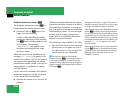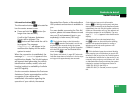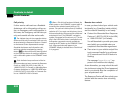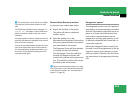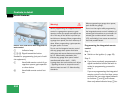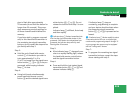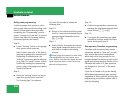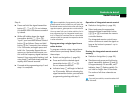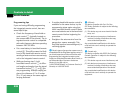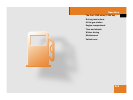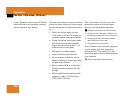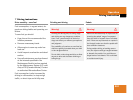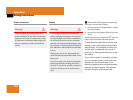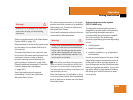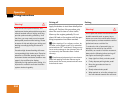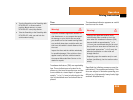
298
Controls in detail
Useful features
Programming tips
If you are having difficulty programming
the integrated remote control, here are
some helpful tips:
ț Check the frequency of hand-held re-
mote control 5 (typically located on
the reverse side of the remote). The in-
tegrated remote control is compatible
with radio-frequency devices operating
between 280-390 MHz.
ț Put a new battery in hand-held remote
control 5. This will increase the likeli-
hood of the hand-held remote control
sending a faster and more accurate sig-
nal to the integrated remote control.
ț While performing step 3, hold
hand-held remote control 5 at differ-
ent lengths and angles from the signal
transmitter button (2, 3 or 4) you
are programming. Attempt varying an-
gles at the distance of 2 to 5 inches
(5 to 12 cm) away or the same angle at
varying distances.
ț If another hand-held remote control is
available for the same device, try the
programming steps again using that
other hand-held remote control. Make
sure new batteries are in the hand-held
remote control before beginning the
procedure.
ț Straighten the antenna wire from the
garage door opener assembly. This
may help improve transmitting and/or
receiving signals.
i
Certain types of garage door openers are in-
compatible with the integrated remote control. If
you should experience further difficulties with
programming the integrated remote control,
contact an authorized Mercedes-Benz Center, or
call Mercedes-Benz Customer Assistance
Center (in the USA only) at
1-800-FOR-MERCedes, or Customer Service (in
Canada) at 1-800-387-0100.
i
USA only:
This device complies with Part 15 of the
FCC Rules. Operation is subject to the following
two conditions:
(1) This device may not cause harmful interfer-
ence, and
(2) this device must accept any interference
received, including interference that may
cause undesired operation.
Any unauthorized modification to this device
could void the user’s authority to operate the
equipment.
i
Canada only:
This device complies with RSS-210 of Industry
Canada. Operation is subject to the following
two conditions:
(1) This device may not cause interference, and
(2) this device must accept any interference
received, including interference that may
cause undesired operation of the device.
Any unauthorized modification to this device
could void the user’s authority to operate the
equipment.



